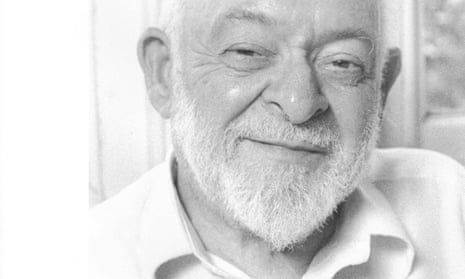Leon Mestel, who has died aged 90, taught generations of astronomers the importance of magnetic fields inside stars and, on the larger scale, across galaxies. He discovered the cooling law for white dwarf stars, showed how magnetic fields in forming stars allowed them to dispose of excess spin, and how a star such as the sun slows down its rotation through an interaction between the star’s magnetic field and the wind of hot gas blowing from its surface.
He was associated with the universities of Cambridge, Manchester and especially Sussex, and played a major role in helping to develop the Astronomy Centre at Sussex.
Leon was born in Melbourne, Australia, and the family migrated to Forest Gate in the East End of London when he was three. His father, Solomon Mestel, was a rabbi; his mother, Rachel (nee Brodetsky), was a schoolteacher. Leon wrote in 2012: “The overwhelming influences in my childhood were on the one hand the Judaic tradition, and on the other a complementary commitment to secular studies.”
He wrote of his interaction with his parents as a student: “I met the perpetual questioning ‘How are you going to make a living from the study of mathematics?’ with ‘I can always become a statistician or an actuary’. It is both easy and entertaining to picture my parents’ bewildered reaction if I had replied that I would spend my life worrying about the insides of stars.”
Leon was educated at West Ham secondary school and Trinity College, Cambridge, where he gained a first-class degree in mathematics in 1947. He then studied for a PhD with Fred Hoyle, working on white dwarf stars, which are the end point of evolution of stars such as the sun. He found that these dead stars, whose white colour indicates a temperature of more than 100,000 degrees centigrade, cooled over a timescale of billions of years, a prediction that has been amply confirmed.
After Cambridge, Leon worked with Tom Cowling at Leeds, at first continuing his interest in the structure of stars but gradually becoming fascinated by the role of magnetic fields on the structure and evolution of stars. Usually it is assumed that a star’s magnetic field is rigidly “frozen” into the material of the star but Leon and Lyman Spitzer showed in 1956 that this could be relaxed by a process now known as “ambipolar diffusion”. In a classic 1965 paper (Problems of Star Formation, published in the Quarterly Journal of the Royal Astronomical Society of London) he showed that the magnetic field allows a forming star to reduce its spin by a factor of a million. The forming star transfers its spin to the parent cloud from which it is forming via the magnetic field.
In 1968 Mestel showed how the magnetic field of a star such as the sun slows down its rotation over time through interaction with the stellar wind of gas that such stars blow off their surface. He was able to show that magnetic fields are important in almost all aspects of stellar and galactic astrophysics. Speakers at seminars and conferences would dread the question from Leon: “What about the role of the magnetic field?” His researches were summarised in his great monograph Stellar Magnetism (1999).
On concluding his postdoctoral work at Leeds, Leon spent a year at Princeton and then returned to Cambridge as a lecturer in mathematics in 1955. From 1967 he spent six years as professor of applied mathematics at Manchester University and then moved to the University of Sussex as professor of astronomy, a position he held for 19 years until he retired in 1992.
He made a major contribution to the development and success of the Astronomy Centre at Sussex, and after his retirement remained a regular presence there until he moved back to Cambridge in 2008. His last scientific paper, On the Evolution of Stable Magnetic Fields in Stars, was published in 2010. During retirement he also wrote obituaries of a number of colleagues and friends, including Tom Cowling, Martin Schwarzschild, Bill McCrea, and Roger Tayler.
He was made a fellow of the Royal Society in 1977 and awarded the gold medal of the Royal Astronomical Society in 2002, a society he strongly supported and whose meetings he regularly attended. Earlier, in 1993, he had received the Royal Astronomical Society’s Eddington medal for his fundamental work on stellar magnetism.
Leon had a highly developed sense of humour and was always ready with an excellent joke. His many distinguished research students included Donald Lynden-Bell, Ian Roxburgh, Ken Freeman and Peter Strittmatter. He was a good friend and mentor to many younger researchers, including those like myself who did not work in his field.
He married Louise Cole in 1951 and they had two sons and two daughters. Louise died in 2014. Leon is survived by their children, Leonora, Jonathan, Rosie and Ben, and by four grandchildren.

Comments (…)
Sign in or create your Guardian account to join the discussion